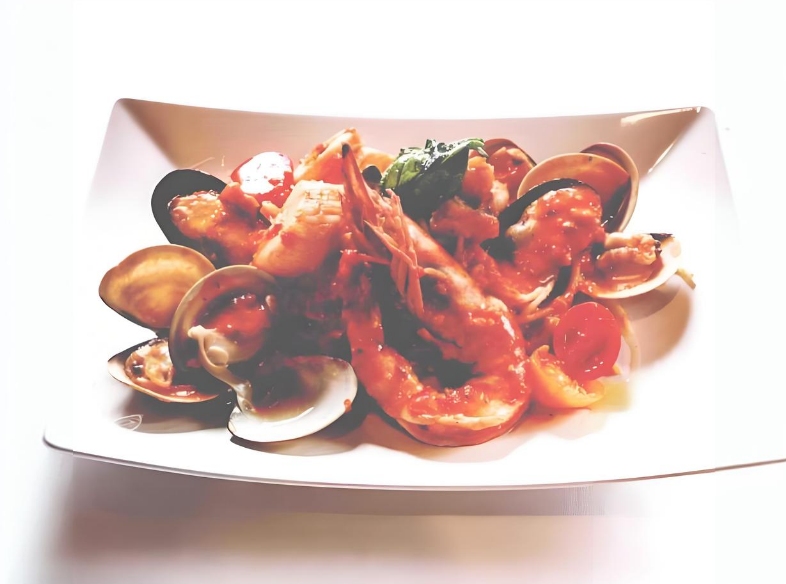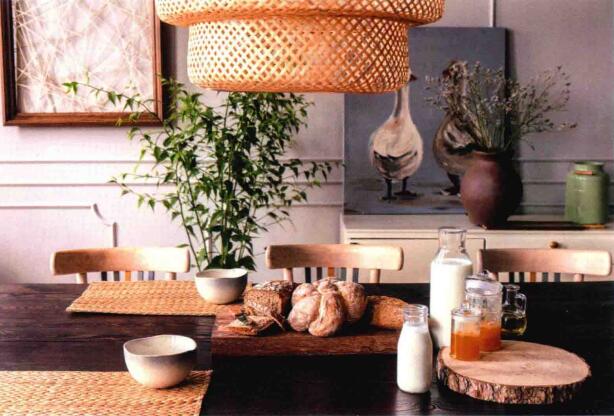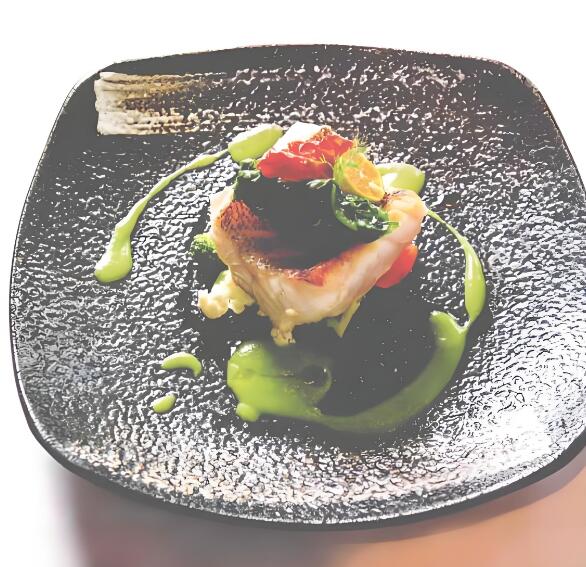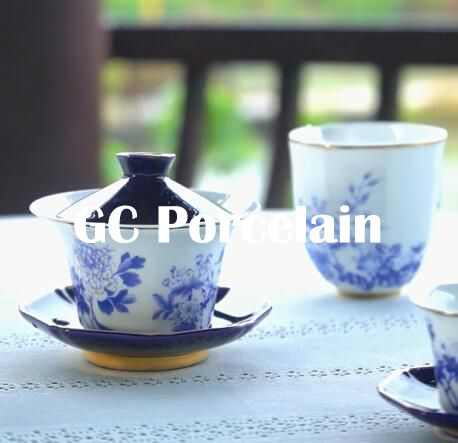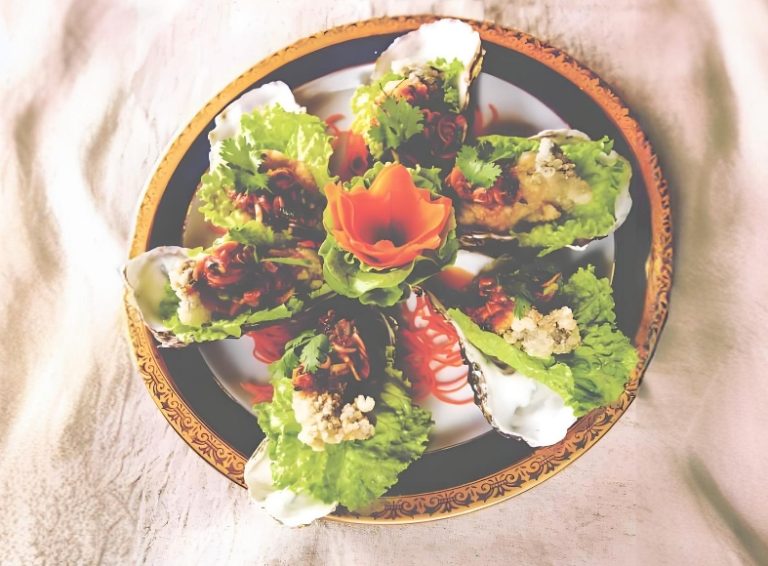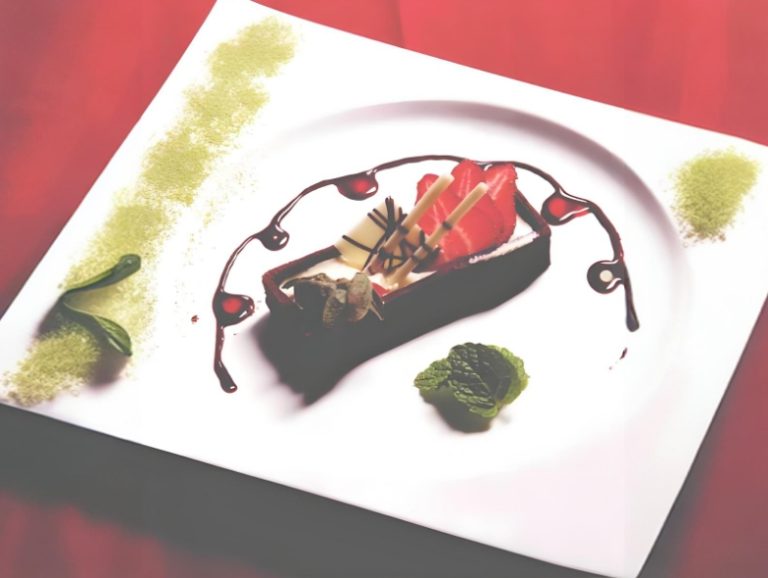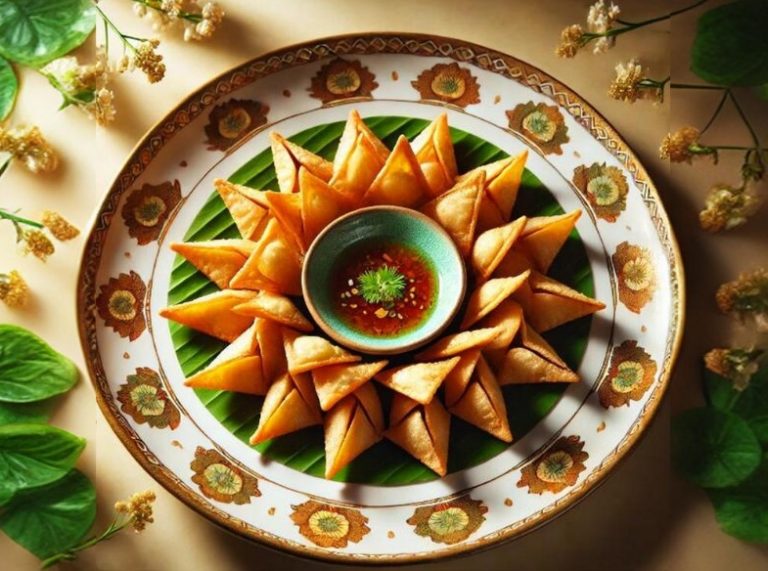Plating technique for tiger prawn spaghetti
Since pasta tends to spread out easily, a deep round plate is usually preferred. However, for this dish, a rectangular plate was chosen to create a visual effect of a generous serving. The pasta is placed in the center of the plate, surrounded by all the seafood ingredients, with the shrimp placed on top to add height and serve as the focal point.
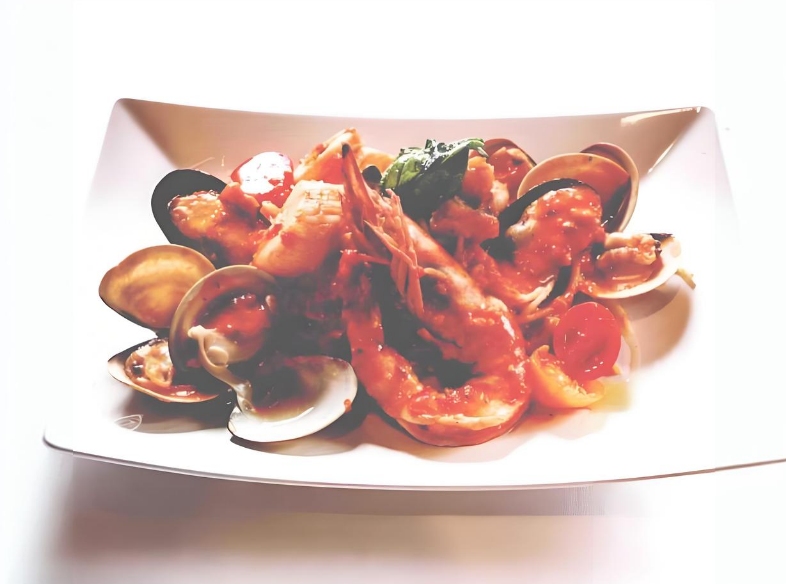
Ingredients: Spaghetti, clams, shrimp, scallops, squid, mussels, shrimp paste, tomatoes, etc.
Instructions: Stir-fry the spaghetti with clams, shrimp, scallops, squid, and a variety of other ingredients. Add shrimp paste and tomatoes, and continue stir-frying until everything is fully cooked. Remove the cooked ingredients, and set the shrimp paste aside for later use.
Scene 1: Use a monochromatic plating style to create a visually abundant presentation
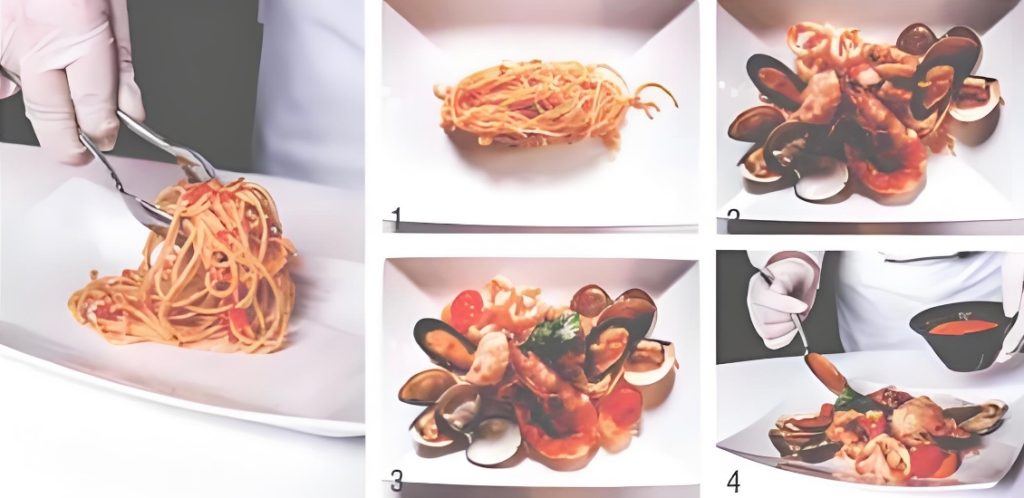
Plating Method
① Place the tomato pasta in the center of a long plate, keeping it stacked and compact. This will give the noodles some height, preventing them from looking too scattered or messy.
② Starting from the bottom left, arrange the clams, mussels, and squid around the edge of the plate in a circular pattern. Leave a small gap in the lower half of the noodles and place the largest ingredient, the tiger prawn, with its head facing up, at the top of the pasta stack as the visual focal point.
③ Add halved cherry tomatoes in the upper left and lower right positions to highlight the dish’s tomato flavor, and place crispy basil leaves next to the prawn’s head.
④ Drizzle shrimp sauce and olive oil directly over the pasta.
Plating Tip: If you want to use leaves as a garnish but don’t want them to appear wilted and shapeless, you can fry them in hot oil to make them crispy. This not only preserves the green element but also makes the leaves more palatable for diners.
Scene 2: Grand and Generous Large Bowl Presentation
This presentation aims to create a visual feast of abundance, using a large black soup bowl instead. The orange of the noodles contrasts vividly with the black of the dishware, and the slightly larger size of the bowl gives a sense of boldness and generosity. Drizzling rich sauce over the noodles enhances the flavor, making the dish even more appetizing.
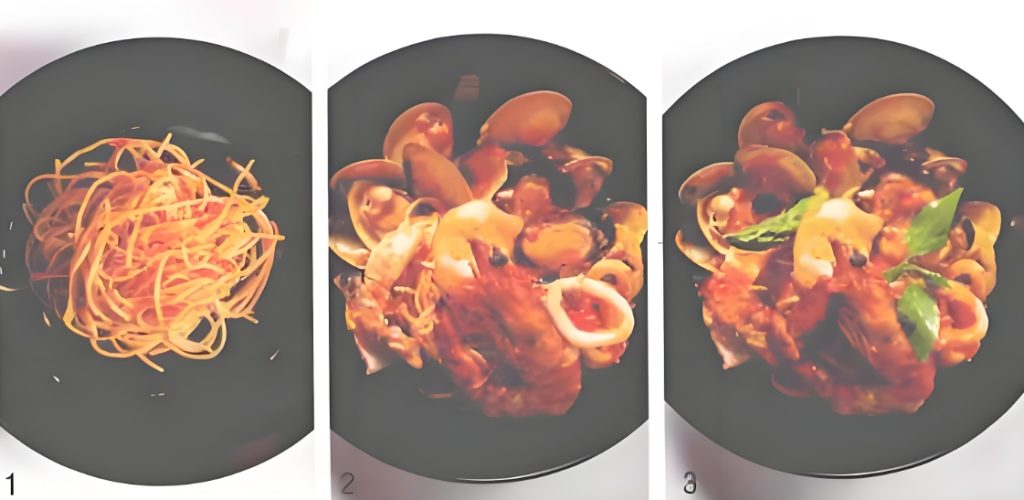
Plating Method
① Place the tomato pasta in a large black bowl, stacking the noodles as high as possible to give a fuller appearance. Leave space around the pasta to arrange the seafood.
② Arrange the clams, mussels, and squid around the outside of the pasta from left to right. Place a scallop in the center of the noodles, with a tiger prawn underneath.
③ Drizzle rich shrimp sauce and a little olive oil over the dish. Insert fresh asparagus to the left of the scallop and place fresh basil to the right. The touch of green adds a refreshing element. Finally, top the prawn with marinated tomatoes, and the dish is complete.
Plating tip: Since pasta dishes often have sauce, the main ingredients and pasta tend to be in the same color range. When choosing a plate, go for one with a strong contrast to the sauce color. Common white or black plates available on the market are always a stylish choice.
If you have any questions or need to custom dinnerware service, please contact our Email:info@gcporcelain.com for the most thoughtful support!

